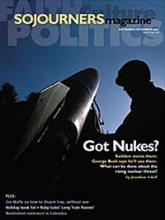For all the months of saturation coverage, we still actually know very little about what happened on Sept. 11, 2001. The long shot of the collapsing towers plays and re-plays on our screens and is burned in our brains, but, after the first few hours, the news media became very squeamish about reporting details of the carnage. We've learned enough about who was responsible for the attacks to justify for many the subsequent military action, but not much more. And details about how they did it have remained shrouded in secrecy.
Now more information has begun to appear. Victims' families have been allowed to hear the cockpit recording from the plane that crashed in Pennsylvania and the emergency tapes from the Trade Center, and some of them have told what they heard. Still more detail has emerged in The Atlantic Monthly's three-part series on "Unbuilding the World Trade Center." But for the most part, our picture of 9-11 is still a line drawing of heroism and loss, without much shading or detail.
The danger of painting the 9-11 tragedy with such a broad brush, at least for those of us who are geographically distant from Ground Zero, is that it may become a mere symbol upon which we can project whatever meaning we choose—jingoistic, anti-imperialist, theological... you name it. A real live, up-close human tragedy resists such easy summary, or easy resolution. Tragedy is, by definition, ambiguous. The good guys aren't all good, and neither are we. The villains aren't all evil, either. They, too, as filmmaker Jean Renoir famously put it, "have their reasons." Facing up to tragedy is a part of growing up. And as a nation we've never done it.
Read the Full Article
